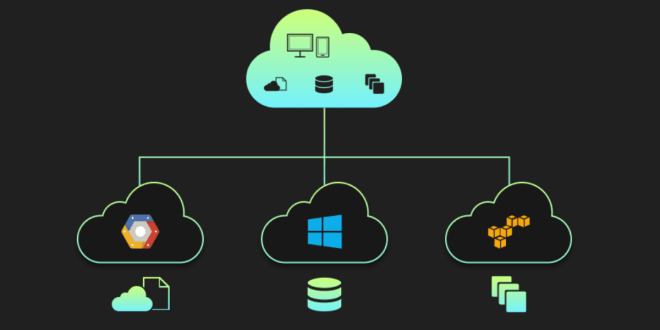In today’s digital landscape, the adoption of multi-cloud environments has become a prevalent trend among businesses seeking to maximize their IT infrastructure’s efficiency and flexibility. Multi-cloud refers to the practice of using multiple cloud service providers simultaneously to meet diverse computing needs. One of the key components of multi-cloud strategies is efficiently managing private cloud services, which can offer enhanced security, control, and customization options. In this comprehensive guide, we delve into the strategies and best practices for effectively managing private cloud services to optimize your organization’s cloud infrastructure.
Understanding Private Cloud: A Primer
Before diving into the management strategies, it’s crucial to grasp the concept of private cloud. A private cloud is a cloud computing environment exclusively dedicated to a single organization. It can be hosted either on-premises or by a third-party provider. This setup provides greater control over data, compliance, and security while maintaining the benefits of cloud scalability and resource allocation.
Private clouds can be built and tailored to an organization’s specific needs, making them ideal for industries with stringent regulatory requirements and businesses seeking to leverage their existing infrastructure investments.
Benefits of Private Cloud Adoption
Private cloud adoption offers numerous advantages that contribute to its popularity in various industries. Some key benefits include:
- Enhanced Security: With a private cloud, sensitive data is not shared with other organizations, reducing the risk of unauthorized access and potential data breaches.
- Customization and Control: Organizations have complete control over the private cloud’s configuration, enabling them to customize the environment to suit their unique requirements.
- Compliance and Data Residency: Private clouds offer compliance with industry regulations and data residency laws, ensuring data remains within specific geographic boundaries.
- Improved Performance: By avoiding the potential performance fluctuations associated with public clouds, private clouds can deliver more consistent and predictable performance.
Crafting a Multi-Cloud Strategy
While private clouds offer substantial benefits, adopting a multi-cloud strategy can further enhance an organization’s IT capabilities. Here are essential steps to crafting an effective multi-cloud strategy:
- Assessment and Planning: Evaluate your organization’s existing IT infrastructure, workloads, and business objectives. Identify areas where a multi-cloud approach can address specific needs effectively.
- Cloud Provider Selection: Choose cloud providers based on their expertise, service offerings, and geographic coverage. Selecting complementary providers will offer more flexibility and redundancy.
- Integration and Interoperability: Ensure seamless integration and interoperability between different cloud platforms. Utilize application programming interfaces (APIs) to facilitate data and workload portability.
- Data Management and Security: Implement robust data management and security protocols across all cloud environments to safeguard sensitive information.
- Monitoring and Optimization: Continuously monitor the performance and cost of your multi-cloud setup. Optimize resource allocation to avoid unnecessary expenses and ensure optimal application performance.
Efficiently Managing Private Cloud Services
Managing private cloud services requires a well-defined approach that aligns with your organization’s goals. Here are key strategies to ensure efficient management:
Resource Planning and Allocation
- Identify the computing resources required by each workload and allocate resources accordingly.
- Utilize automation tools to manage resource provisioning and scaling, optimizing resource utilization.
Security and Compliance
- Implement robust security measures, such as encryption, access controls, and regular security audits.
- Ensure compliance with relevant industry regulations and data protection laws.
Disaster Recovery and Business Continuity
- Develop a comprehensive disaster recovery plan to minimize downtime and data loss in the event of a catastrophe.
- Regularly test and update the disaster recovery plan to account for changing business needs.
Performance Monitoring and Optimization
- Utilize monitoring tools to track the performance of applications and infrastructure.
- Identify and address performance bottlenecks to enhance overall efficiency.
Cost Management
- Analyze cloud service costs regularly and optimize spending based on actual usage.
- Consider reserved instances and spot instances for cost savings without compromising performance.
Real-Life Examples of Private Cloud Adoption
To illustrate the effectiveness of private cloud adoption, let’s explore two real-life examples:
Healthcare Industry
A healthcare organization opts for a private cloud to store patient data securely and comply with HIPAA regulations. The private cloud enables the seamless integration of electronic health records and facilitates secure data sharing among medical professionals while maintaining patient privacy.
E-commerce Company
An e-commerce giant leverages a private cloud to manage its online storefront, inventory, and customer data. The private cloud’s customization allows the company to handle fluctuating demands during peak seasons and offers enhanced security for sensitive payment information.
Final Words
Embracing the era of multi-cloud adoption and efficiently managing private cloud services can significantly enhance an organization’s IT capabilities. By understanding the benefits, crafting a robust multi-cloud strategy, and implementing efficient management practices, businesses can achieve greater flexibility, security, and performance within their cloud environments.
Commonly Asked Questions
Q1: Can I use a multi-cloud strategy with only public clouds?
A: Absolutely! While the focus here is on efficiently managing private cloud services, multi-cloud strategies can involve various combinations of public, private, and hybrid clouds, depending on an organization’s needs.
Q2: Is it challenging to integrate different cloud platforms?
A: With the right planning and the use of standardized APIs, integrating multiple cloud platforms becomes manageable, allowing seamless data and workload portability.
Q3: Are private clouds suitable for small businesses?
A: Private clouds can benefit small businesses by offering enhanced security, control, and compliance. However, budget constraints may lead some small businesses to opt for public or hybrid cloud solutions.
Q4: How do I ensure data security in a multi-cloud environment?
A: Implementing strong encryption, access controls, and regular security audits across all cloud environments will help ensure data security in a multi-cloud setup.
Q5: What is the cost implication of a multi-cloud approach?
A: The cost of a multi-cloud strategy can vary based on the chosen cloud providers and the resources utilized. Effective cost management practices can help optimize spending and avoid unnecessary expenses.
 webfily
webfily



